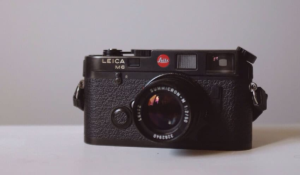Color Filters for Black-and-White Photography: A Complete Guide

Introduction to Color Filters
Color filters are often forgotten in discussions about modern photography, despite their versatility. This article will correct this oversight by examining the various types, functions, and purposes of color filters.
How to Identify Color Filters

Color filters can be distinguished by their vibrant, solid colors and familiar design similar to other lens filter. They can be used to adjust contrast and light balance for monochrome photos and dramatically change the colors of color photographs.
How color filters work:

Color filters transmit only certain wavelengths of visible light, while blocking other wavelengths. This selective transmission alters the tonal contrast and range of monochrome images. Each color filter produces a different effect.
Common Color Filters: Their Effects

Yellow filters are versatile and can be used for a variety of subjects. By cutting through the green tones, green filters highlight natural elements within landscapes. Red filters enhance textures and contrasts, giving photos a gritty look. Orange filters are a good balance between yellow and red, and can be used to enhance skin tones or organic subjects. Blue filters are less common but can reduce contrast and smooth color gradients.
Special-Purpose Color Filters:
There are also specialized filters that cater to certain use cases. These filters, while less common, can produce unique effects if used correctly. For example the FOCA “DYMA” filter is perfect for landscapes with a lot of flora.
Color Filter Factors:
Filter factors are assigned to each color filter. These indicate the amount of light that it blocks. This requires exposure adjustments. Filters with higher filter factors, such as red and green filters, may require compensatory exposure adjustments.
Wratten Numbers:
Wratten numbers are used to standardize color filters, which indicate specific shades and intensities. Understanding Wratten number helps photographers select filters that consistently produce the desired effects.
In-Camera vs. Post-Processing:

You can filter colors either by adding filters to your lens or using software after the fact. In-camera filters are a simple solution, but digital post-processing offers greater control and flexibility.
Benefits of colored filters:
Give photographers more control over the appearance of images, allowing them to create moods, balance contrast and highlight important elements in a situation.
Use Color Filters for Black and White Photography

Grayscale conversion can result in a lack of differentiation between certain colors. The result can be flat images with low contrast and definition. Colored lens filters can help solve this problem, by changing the way that colors are rendered in shades of gray.
Five color filters are commonly used in black-and white photography: blue, yellow, orange and red. Each filter produces a unique result on the final photograph, allowing photographers manipulate contrast, tone and atmosphere.
Yellow filters enhance contrast and separate clouds from the sky. Red filters create dramatic, bold effects by darkening the blue sky and intensifying textures. Orange filters are a perfect balance of red and yellow. They enhance skin tones, and other organic subjects. Green filters are perfect for capturing foliage because they lighten the green tone. Blue filters can enhance mood in a photo by adding haze or mist effects.
Understanding the effects of the various color filters allows photographers to control the look of their black and white images. The right color filter will enhance any photograph, whether it’s a landscape, a portrait, or an urban scene.



